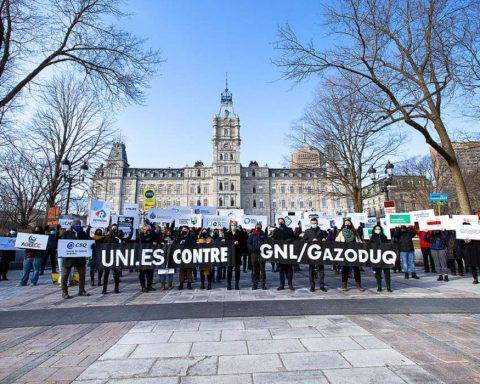Here is how to conserve a forest: soak up carbon from the atmosphere and keep the climate cool: make sure your forest is rich in animal and bird species; make sure that it remains a natural mix of saplings, mature trees, shrubs and creepers; and remember to take care of the forest giants. In other words, leave it to Nature.
Anand Osuri of the National Centre for Biological Sciences in Bangalore, India and colleagues from 14 other institutions report in Nature Communications that large animals play a key role in conserving tropical forests and mitigating climate change – because these are the creatures that spread the seeds of the largest trees that store the most carbon.
This is not a new finding, but an extension of other research into the importance of seed-eaters and the potential hazard to the forests presented by over-hunting.
The new study confirms that the tree species dispersed by large animals differed from those dispersed by smaller animals, or by wind and gravity.
“There is growing recognition that the loss of animals from ecological communities, known as defaunation, poses a threat to carbon storage in tropical forests, but much of this understanding is derived from patterns seen in South American forests alone,” said Mahesh Sankaran of the faculty of biological sciences at the University of Leeds, UK, one of the co-authors.
Evolutionary effect
“Our work shows that carbon storage responses to defaunation will vary across the tropics, largely as a result of differences in the evolutionary histories of forests on different continents.”
But the composition of the forests in which birds and mammals make their homes is also an important part of the climate machine, according to Sarah Frey of the department of forest ecosystems at Oregon State University and colleagues.
They report in the journal Science Advances that old growth forests – the ones with soaring canopy and a dense understorey – could more successfully buffer themselves and their plant and animal ecosystems against the soaring temperatures promised by climate change.
Those forests in the Oregon Cascades that had “vertical complexity” – in other words, foliage all the way down to the ground – could be as much as 2.5°C cooler than plantations of trees or younger, second-growth forests.
“Though it is well-known that closed-canopy forests tend to be cooler than open areas, little is known about more subtle temperature differences between mature forest types,” Frey said. “We found that the subtle but important gradient in structure from forest plantations to old growth can have a marked effect on temperatures in these forests.”
Forest threats
But the preservation of soaring canopy also promises to be a challenge in a rapidly-changing world. David Lindenmayer of the Australian National University in Canberra and Bill Laurance at James Cook University in Queensland argue inTrends in Ecology and Evolution that prolonged drought, invasive species, new pathogens and habitat destruction compound the problems the forests’ oldest, grandest, tallest giants must face.
They considered the potential plight of the giants, the ancient oaks that reach more than 40 metres in Poland’s Bialowieza Forest, the giant baobabs of Madagascar, the towering gums and mountain ash of Tasmania that grow to 90 metres, and the giant redwoods of California that tip 110 metres, trees that have survived for hundreds and even thousands of years.
And big trees matter: they have a giant part in absorbing carbon dioxide from the atmosphere but their very height means that they must work harder to haul water to the canopy. And their size and staying power mean they provide food and shelter for wildlife.
“They’re really the breadbaskets, the supermarkets, of the forest,” said Professor Laurance. “This is a very environmentally and ecologically important group of organisms, and they need special care and handling.”
This article was produced by the Climate News Network.







